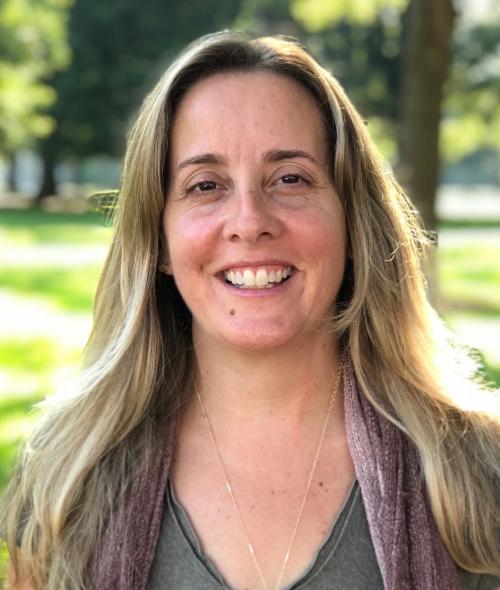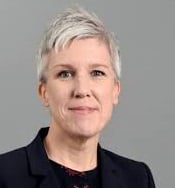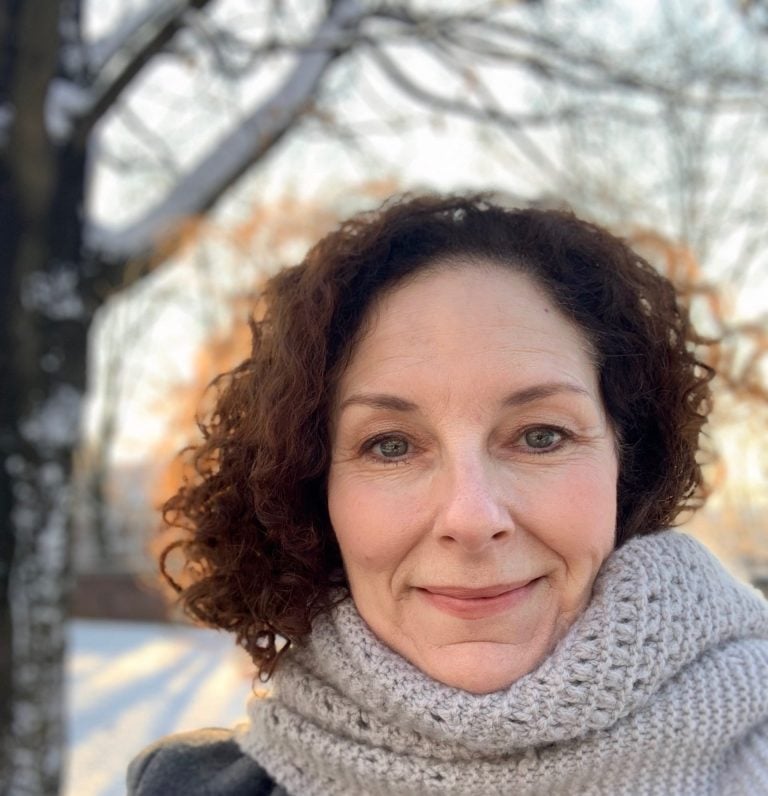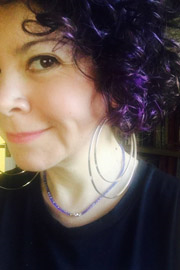You have /5 articles left.
Sign up for a free account or log in.

Istockphoto.com/dorian2013
Welcome to "Transforming Teaching and Learning," a column that explores how colleges and professors are reimagining how they teach and how students learn. If you'd like to receive the free "Transforming Teaching and Learning" newsletter, please sign up here.
***
Last week in this space, I asked a group of thoughtful observers a set of questions about what colleges' sudden, widespread shift to remote learning might mean for the future of online education. The column seemed to strike a chord with a lot of readers -- many positively. But others suggested that the questions I posed, and the people I posed them to, weren't the ones front and center for "the situation we're in," as George Station, a lecturer and faculty associate at California State University Monterey Bay, put it on Twitter.
"Theoretically there are no wrong questions, but at the campus/class level and in professional learning networks," he wrote, "it’s mainly questions about creating or maintaining community from face-to-face to virtual alternatives, engaging faculty and students in the process, easing angst about remote work, etc." that people are searching for answers to.
He encouraged me to "take another run at it, with people and society in the foreground."
With his help, that's what I've done below, with a new prompt directed to a new set of respondents. Please continue to weigh in in the comments below, on Twitter (@dougledIHE) or via email -- we're all in this together.
The prompt:
What has changed in your (or your colleagues’) teaching practices as a result of the COVID-19 crisis? Did your institution’s (or your own) priorities or guiding principles for learners change? What is different for your learners?
How do you expect your ability to support learners through technology to be enhanced or degraded? Will the relationship between content and process change? With the “college at home” environment being the norm, how will you reimagine equitable access for students?
Which changes are “forever" -- permanent changes in the teaching and learning landscape? Which seem more likely to revert to pre-coronavirus approaches, as a new normal in higher education emerges?
What possibilities are there for rebuilding or evolving your own institution on the far side of the COVID-19 crisis? Is this opportunity for growth through the crisis different for your other alliances (e.g., personal learning networks or higher-ed professional organizations)? What is your emerging vision for post-crisis higher education in general?
***
 Bryan Alexander, futurist, educator and writer
Bryan Alexander, futurist, educator and writer
Much depends on how the pandemic plays out.
If nations like the U.S. can burn through all or the worst of COVID-19 in a couple of months, as China did, the impact will be intense but short term. If the coronavirus and our response persist for a year or more, academia will be redefined.
I fear many of the financial costs will clobber our budgets as state appropriations to publics reduce even further, as campus costs mount, international enrollment drops, endowments wither and families are just able to spend less on education. All of that occurs in the short-term scenario. If COVID-19 gnaws on nations for semesters on end, that will gut higher education’s finances. Given recent institutional history, we should expect an expanded adjunctification of the faculty and “queen sacrifice” cuts to programs (especially the humanities).
Our shift online could take several forms. First, if bad-experience stories circulate and have influence, we could see participation and even enrollment decline. Second, given equity issues worsened by recession, open education resources and open-access publishing could triumph. We may also see inequality drive different technology uses, with wealthier communities using more demanding technologies (virtual and mixed reality, telepresence) while poorer ones turn to tools with lower infrastructure demands (asynchronous video, audio, images and text).
Third, as entirely online pedagogy continues, certain pedagogies and support structures should win widespread attention. Colleges and universities might compete for students (as well as faculty and staff) based on how well and prominently they carry out these teaching methods. Fourth, if the pandemic persists unevenly, coming and going in waves over a long period, we might get used to alternating between face-to-face (i.e., really blended) teaching and wholly online instruction.
Research is experiencing a stall now as faculty remove themselves from on-campus resources. An attenuated pandemic could depress scholarly output for a year or more. At the same time, some faculty members may play an increasingly public role for their research, from work in health care to analyzing COVID-19’s impact through the lenses of sociology, political science, culture, media, urban studies, etc. This may appear both in formal scholarship, research and development, or public advocacy.
***
 Maha Bali, associate professor of practice, Center for Learning and Teaching, American University in Cairo
Maha Bali, associate professor of practice, Center for Learning and Teaching, American University in Cairo
What has changed in your (or your colleagues’) teaching practices as a result of the COVID-19 crisis? Did your institution’s (or your own) priorities or guiding principles for learners change? What is different for your learners?
I am a faculty developer and I also teach, so the impact on me has been twofold -- once as the person supporting others in their teaching, and once as a teacher. I think some of the key things people have been struggling with have been how do we support each other through this difficult challenge/crisis (and some faculty have made their own support groups within departments, some have used our services extensively) and for some, how do we maintain rigor and ensure student learning outcomes are met. For me personally, I feel like my teaching priorities have shifted. Rather than thinking of how to take what I currently do to an online format (easy for me as an eLearning expert) it has become, how do I adapt my course so it becomes what students need most in this moment in history?
One important thing I felt my institution tried to emphasize was moving online with equity in mind and trying to reduce learner anxiety. So for example, in our guidelines for moving online (planned for two weeks at the moment) we recommend that faculty not rely too heavily on synchronous videoconferencing so as not to disadvantage students whose internet infrastructure is poorer, or who use a shared device at home, or who have other family members who need the internet bandwidth for other things. For the time being, faculty are advised not to conduct any exams during the coming two weeks, which I think is a relief for many students.
My department has been especially careful about helping faculty make the right choices for their own teaching philosophy and learning outcomes, so we have been working hard to offer options for, e.g., doing a seminar-style class online without synchronous video. I feel like my department has been caring for faculty to help them prepare, and hopefully this care will transfer onto students. In conversations with our faculty, I sense this strong ethic of care for students and their well-being.
How do you expect your ability to support learners through technology to be enhanced or degraded? Will the relationship between content and process change? With the “college at home” environment being the norm, how will you reimagine equitable access for students?
I think this will be hard for faculty who aren't used to living online, finding a way to be connected with students while also maintaining a work-life balance (remember that many faculty have partners and kids at home who also need to work online).
I think equitable access to students will require more flexibility than we anticipate, with everything from attendance to deadlines to modalities of communication. It's not just about communication here, but affect, which is more needed than ever when we are being advised to apply social distancing.
Which changes are “forever" -- permanent changes in the teaching and learning landscape? Which seem more likely to revert to pre-coronavirus approaches, as a new normal in higher education emerges?
I don't know. I worry that this will turn out to be a horrible experience of online learning for many and they will never want to do it again. I do hope some will work hard to make it work well and realize its potential, but I am cautious about this, because no one signed up for this, neither faculty nor students, and there are so many other things about this entire situation (outside of schooling per se) that is causing anxiety and tension, that it is all mixed up together in my emotional reaction to the situation. I do feel hopeful about the number of people I talk to who want to focus on care (see our crowdsourced curation: http://bit.ly/onlinewithcare).
What possibilities are there for rebuilding or evolving your own institution on the far side of the COVID-19 crisis? Is this opportunity for growth through the crisis different for your other alliances (e.g., personal learning networks or higher-ed professional organizations)? What is your emerging vision for post-crisis higher education in general?
I don't understand the question. :))
But for once, so many of us across the globe are going through similar things in different contexts and learning from each other. I have seen so much sharing across the globe and within institutions, so I imagine new relationships and solidarity might last beyond.
I am on the advisory board of a project called Erasmus+ Virtual Exchange, and my own students participate in a Virtual Exchange activity every semester. This semester I anticipate this experience will be deeper than usual, as everyone around the world will have something in common to share.
***
 Robin DeRosa, director, Open Learning & Teaching Collaborative, Plymouth State University
Robin DeRosa, director, Open Learning & Teaching Collaborative, Plymouth State University
What has changed in your (or your colleagues’) teaching practices as a result of the COVID-19 crisis? Did your institution’s (or your own) priorities or guiding principles for learners change? What is different for your learners?
Everyone tends to be a couple of weeks behind on proportionate responses. When it became clear that we would all need to move to remote learning, there was at first a sense that this meant developing online courses in the same ways that we would do this during more normal times. Now I think people are realizing that the circumstances are anything but normal. Many of our students immediately lost jobs and incomes and were thrust into poverty almost overnight. Many of them don’t have Wi-Fi access, and some of our teaching lecturers don’t, either. As more students and faculty and staff become sick, it’s clearly going to shake our plans yet again. Basically, I think what’s emerging for best practice is that there is no best practice for this yet, and it’s imperative that we all remain flexible and listen to the human beings in our colleges when they tell us what they need both in order to learn and, more importantly, in order to survive.
How do you expect your ability to support learners through technology to be enhanced or degraded? Will the relationship between content and process change? With the “college at home” environment being the norm, how will you reimagine equitable access for students?
I am so grateful that we have technology to assist us in our response to this pandemic, but I don’t think technology is the issue here. The issue is how to protect the public good as we weather the months ahead. We need to be thinking less about getting our classes online and more about how colleges can begin to build architectures for learning through a pandemic. I think we will need to be a lot more creative than just opening Zoom rooms or posting stuff in the LMS, especially when so many of the students (and even adjuncts) at my own university don’t have reliable internet access.
First, talk with your students: What do their lives look like now, and how can learning complement rather than complicate their new reality? Second, engage with the crisis: this pandemic is unlikely to last forever, so while it is with us, how should our fields be responding and how can we involve our students in using our academic resources to solve challenges that the pandemic is causing? Whatever courses we teach, two things are true: 1) we teach students and we need to listen to them in order to design around their capacities, and 2) our fields have something to offer a world in crisis, and our students are the future of our fields.
Which changes are “forever" -- permanent changes in the teaching and learning landscape? Which seem more likely to revert to pre-coronavirus approaches, as a new normal in higher education emerges? What possibilities are there for rebuilding or evolving your own institution on the far side of the COVID-19 crisis? Is this opportunity for growth through the crisis different for your other alliances (e.g., personal learning networks or higher-ed professional organizations)? What is your emerging vision for post-crisis higher education in general?
I hope that this pandemic is helping us rethink the way we have devalued public systems. Again, I don’t care much about online vs. face-to-face. I think the key is public. Just like with health care, public higher education is not just about individuals being served. If we want healthy communities (longer lives, less crime, improved mental health, etc.), we need to fund public institutions and infrastructures that allow the public to pay itself for what it needs to thrive. Public higher education -- the data is clear -- is one of those things. I hope that post-pandemic, we will adequately fund public higher education, public broadband and public health. The fact that we haven’t yet is one reason that this is hitting us so hard.
***
 Kristen Eshleman, director of innovation initiatives, Davidson College
Kristen Eshleman, director of innovation initiatives, Davidson College
In a recent Twitter exchange, I argued that the question posed by the article -- "Will a shift to remote teaching help or hurt online learning?" -- was the wrong question to ask, at least for the moment. The more important question for this crisis is how we do (or don’t) support our students and educators through what is a massive upheaval. We can worry about how online learning might change in the future later. Right now, we must take care of those in the middle of this huge shift.
The current response is triage. We are adapting to maintain as much of the familiar learning and community engagement as we can in the short term. Yes, we should adopt the technologies and strategies that support effective online learning. To that end, we will benefit from the excellent prior work of online education researchers. Right now, we need the simplest and most effective methods for our students to achieve the resolution they desire, as we seek to sustain the community and connections we have formed in residence.
It's one thing to do this online when you are already starting from that premise -- where your community has self-selected for that environment. It’s quite another when your community hasn’t. As Amy Collier reminded us, “Our faculty and our students are hurting and grieving right now. This is a moment for care.” We may learn more about our adaptability from how we respond to this crisis than what we design.
So, what have we learned so far? We learned the sector can turn on a dime when we need to. We learned that when all of the oars are rowing in the same direction, we rise to the challenge and adapt to changes that once seemed improbable. We embraced discomfort together. We may even learn that some remote learning could be desirable for what it affords our students. If we hold on to these learnings beyond a crisis, we will be less fragile in an already uncertain and changing context.
Most important, at Davidson, we are leaning into care over productivity. We are witnessing servant leadership in action. Our process will never be perfect, but as we move through this crisis I am reminded of a quote from Maya Angelou: “I've learned that people will forget what you said, people will forget what you did, but people will never forget how you made them feel.”
***
 Joshua R. Eyler, director of faculty development and lecturer in writing and rhetoric, University of Mississippi; author of How Humans Learn: The Science and Stories Behind Effective College Teaching (West Virginia University Press, 2018)
Joshua R. Eyler, director of faculty development and lecturer in writing and rhetoric, University of Mississippi; author of How Humans Learn: The Science and Stories Behind Effective College Teaching (West Virginia University Press, 2018)
I'm really not sure anyone can accurately predict how higher ed will change as a result of this crisis. I do think that several changes are possible, given what I have seen over the last few weeks and what I've observed happening across the country.
First, one thing is clear: the rhetoric of care has been central to the discussions universities have been having right now. Front and center in all of the decisions -- from closing campuses to emergency policies about P/F, withdrawals, etc. -- has been an expression of caring for students. I'm not talking only about their physical health here, though, but about their emotional and psychological well-being as well and the ways in which crises like this affect students' ability to learn.
There is a thread of the national conversation right now that seems to imagine that higher ed's only concerns are getting courses online as quickly as possible no matter what, but this hasn't been my experience. What I have seen is faculty at my institution and beyond really considering their students, thinking about how challenging this situation will be for them, and building educational environments that center community and generosity. Brandon Bayne from UNC, for example, circulated a syllabus addendum on social media that spoke directly to these issues, and it has been shared by thousands of faculty nationwide. Once you make this such a core part of the conversation, you cannot undo it, and it is my hope that higher ed will rebuild on the foundation of these principles.
Secondly, in developing multifaceted responses to various elements of this crisis, the silos that are traditionally embedded within institutions of higher ed have been shattered. Just as one example among many: I have spent the last 10 days on a team made up of colleagues from different units across campus. I hadn't even met some of them before we first began this work, but we came together to help faculty make this transition, and I have heard the same thing from friends at many other universities. Similarly, there are groups working together on student resources at many universities that may not have collaborated before as much as they have been over the last few weeks. Making change in higher ed is typically a daunting prospect because of these silos, but they have been broken down now in ways that I hope will be long lasting and will lead to effective responses, programs, policies and networks in the future.
Finally, I've seen faculty across the country sharing resources, supporting each other, consoling each other, offering hope and forging a way forward together. That's something on which you can build a future.
***
 Laura Gibbs, online instructor, University of Oklahoma
Laura Gibbs, online instructor, University of Oklahoma
My school is responding with a lot of compassion for students right now. For example, we've instituted a P/NP policy so students can see their final grades for the spring semester and opt to take a P grade in any class in which they received a D or better, including classes for their major and other degree requirements. I'm really glad to see that because many students are facing life crises, and we should be doing everything we can to help them make progress towards their degree.
But here's the thing: we've always had students whose lives are in crisis, and every semester I see students who should have had that compassionate P/NP option available because of the challenges they face (medical crises, family crises, financial crises, etc.). So, I hope we will keep that P/NP policy on the books. Students who persist in their education through hardship always deserve support in every way we can offer it, not just in this time of global crisis.
Likewise with technology. There are so many ways we can use the internet to connect with each other, person to person, sharing and learning together, and that applies to all classes at all times, not just in this crisis. The reason I left the classroom to teach fully online was to find more/better ways to connect with students. In the classroom, there were always students I didn't really get to know, students who fell through the cracks.
Online, we have more ways to connect with students and more flexible times in which to do that (my courses are 100 percent asynchronous), and that means I can connect with every student, much more so than when I was limited to the space and pace of the classroom. I would urge everyone to explore different options -- blogs and websites, Twitter and YouTube (make your own channel!), and so on. My school is emphasizing the LMS and Zoom, but I hope faculty will look at other spaces and channels as well, experimenting to see what works best for you and your students. You're not going to figure that out right away, and that's fine. Brainstorm with your students about possible options! If you discover new ways to connect with your students beyond the classroom now, that will help you be a better teacher in the future, no matter what that future holds.
***
 Penelope Adams Moon, acting director of online learning strategy and affiliate faculty, Interdisciplinary Arts & Sciences, University of Washington Bothell
Penelope Adams Moon, acting director of online learning strategy and affiliate faculty, Interdisciplinary Arts & Sciences, University of Washington Bothell
What has changed in your (or your colleagues’) teaching practices as a result of the COVID-19 crisis? Did your institution’s (or your own) priorities or guiding principles for learners change? What is different for your learners?
One of our campus’s guiding principles is that we aim to provide access to excellence. In the wake of COVID-19, that principle has taken on new meaning. Whereas we once might have framed excellence in terms of attainment (e.g., rankings, publications, awards), this crisis has revealed that our excellence might actually not be measured by our proximity to perfection, but by our ability to iterate and adapt. Faced with a ridiculously short window in which to prepare, our faculty and staff are forging ahead with all the grace of a wobbly toddler -- perfection be damned! They are jumping feetfirst into unfamiliar technologies and pedagogies with minimal training, aware that they will be iterating in real time in front of their students. They are emphasizing empathy and flexibility in their syllabi, more conscious than ever of their own need for such affordances. Right now, teaching excellence is more likely to take the form of granting students flexibility so that they can care for out-of-school children rather than handing them another tightly conceived assignment.
It will be interesting to see if this embrace of flexibility sparks a broader shift in higher education. For too long we have mistaken rigor for academic integrity when in fact, from a definitional standpoint, rigor simply means rigidity, severity and harshness -- the exact opposite of the flexibility we so need during this crisis.
How do you expect your ability to support learners through technology to be enhanced or degraded? Will the relationship between content and process change? With the “college at home” environment being the norm, how will you reimagine equitable access for students?
Three weeks ago, our CIO created a core emergency response team that’s been running at full tilt ever since. Issues of equity have been central to our work. We’ve ramped up of our equipment loan service and moved quickly to procure additional laptops and hotspots for underresourced students. We’ve stepped in to prevent panic buying of software and hardware, conscious of how such purchasing creates security issues, overburdens support staff and siphons money away from other crucial needs. We’ve stressed the need to minimize synchronous sessions as they disproportionately burden students and staff wrestling with low bandwidth and those needing to care for family members.
We’ve also thought about how to provide support more equitably. Our campus has traditionally been pretty decentralized, and faculty and students have been accustomed to highly personalized, bespoke support and training. That model has privileged those with time and access to campus and is ill suited for crisis situations. We’ve responded by streamlining our system for requesting support, cross-training staff and pivoting to a one-to-many support model. The one-to-many model includes, among other things, dynamic instructional and operational continuity pages, a student help page focused on remote learning and access to technology, live Zoom-based crash courses (recorded for asynchronous use), and a publicly accessible course template that enables faculty to focus on customizing, rather than building from scratch in the LMS. Our COVID-19 strategies will, I think, actually make our support more responsive and equitable moving forward.
What possibilities are there for rebuilding or evolving your own institution on the far side of the COVID-19 crisis? Is this opportunity for growth through the crisis different for your other alliances (e.g., personal learning networks or higher-ed professional organizations)? What is your emerging vision for post-crisis higher education in general?
For me, this crisis has confirmed how much we need to refine processes across higher education. Bottlenecks and single points of failure abound. Professional and disciplinary provincialism inhibits collaboration and leads to costly duplication of effort. Cumbersome and redundant approval processes and governance structures limit our ability to be nimble and responsive to our community’s diverse array of needs. Our planning is more often performative rather than strategic. We consistently overestimate the capacity of faculty and undervalue the expertise of staff.
And yet the crisis has also offered glimpses of what could be -- diverse teams mobilizing to creatively solve problems as they arise, bureaucratic hoops jettisoned so that common-sense action can proceed quickly, and academic and workplace constraints loosened to allow us all -- faculty, staff and students -- the flexibility we need to be productive colleagues, attentive caregivers and balanced human beings. I am hopeful that higher education will emerge from this crisis with fresh ideas and structures.
***
 Sean Michael Morris, director, Digital Pedagogy Lab, and senior instructor of learning design and technology, University of Colorado Denver School of Education and Human Development
Sean Michael Morris, director, Digital Pedagogy Lab, and senior instructor of learning design and technology, University of Colorado Denver School of Education and Human Development
Can we expect that pandemic-related pedagogies, policies and approaches will somehow change the face of education? I’m reminded of Sandra Bullock’s character at the end of Speed -- after she and Keanu Reeves have survived dozens of threats, explosions, bombs and more -- when she quips about their romantic connection, “Relationships that start under intense circumstances -- they never last.” So, I have to wonder: Will education’s sudden encounter with online learning (which is really more an encounter with educational technology and its failings) lead to something sustained and productive? Or is this a short-term thing that serves a purpose, fills a gap? What we’re experiencing with the pivot to online is the latter, not the former.
Arit John’s recent Los Angeles Times article, “Teachers find many obstacles as they try to keep kids learning amid coronavirus,” has little to report in the way of positive change in this regard. John and his co-writers report that “As teachers scramble to adjust to an entirely new world of education, they are coming up against significant barriers.” And though the piece is focused on K-12 schools, we find similar issues in higher education. Vice’s "Motherboard" reported on the real problems teachers and students face in the pivot to online: “A recent study found that roughly one in five college students has trouble accessing basic technology … Adding to the stress of already vulnerable teachers, the impact of the transition to online education for the most vulnerable college students could be increased dropout rates.”
What’s happening now isn’t what we ever imagined for online education or digital learning. It isn’t the grand experiment some writers suppose, nor does the solution lie in confusing and situationally irrelevant instructional design. The pivot to online is a response to an unprecedented emergency, triage at best. Digital pedagogy is an emerging field -- may always need to be -- and not something hastily discovered in the aftermath of a crisis. The nuanced work of digital pedagogy has been being done, improved upon, iterated again and again, by dedicated teachers and scholars for decades. It was never meant to be a quick solution for every teacher in every situation.
If there is anything I hope emerges in the new normal of higher education after this crisis passes, it would be a clearer, more widespread awareness that we must commit time, resources and scholarship to digital pedagogy. We shouldn’t turn to the outdated and undertheorized conventions of traditional online learning, but instead to approaches flexible, responsive and caring enough to support students and teachers today and through the next emergency.
***
 Lora Taub, professor of media and communication and dean for digital learning, Muhlenberg College
Lora Taub, professor of media and communication and dean for digital learning, Muhlenberg College
What has changed in your (or your colleagues’) teaching practices as a result of the COVID-19 crisis? Did your institution’s (or your own) priorities or guiding principles for learners change? What is different for your learners?
At Muhlenberg College, our best resources for teaching remote -- in a pinch and panic -- are our guiding principles. They remain unchanged, but distinctly amplified. Our care and commitment to our students' learning and growth are more visible than ever. These principles guide the choices we are making in reframing and reimagining our courses -- in a pinch and a panic -- for remote teaching and learning.
Everything is different for our learners. But working in our favor, working to keep us knit together while flung across the country, is the community that students and faculty built with each other in the first eight weeks of the semester. That is the foundation that shapes what is possible for our learners now, under varied and dynamic conditions and constraints.
How do you expect your ability to support learners through technology to be enhanced or degraded? Will the relationship between content and process change? With the “college at home” environment being the norm, how will you reimagine equitable access for students?
We began cultivating the environment and practices for learning online in the liberal arts six years ago. Forty faculty have completed our faculty development program for online course design and pedagogy. In nearly every department on campus, there is a faculty member who has experience teaching online, and our culture of peer learning and mentorship runs deep. This collective wisdom, and a culture that values and practices peer mentoring, is more important than the particular technologies we are invoking for remote learning.
We also have a culture of peer support among students and an award-winning digital learning assistantship program for students. Eight digital learning assistants, students with deep interest in digital technologies and practices, are now holding remote virtual drop-in hours daily, from 2 to 6 p.m. This culture of peer support for digital learning links up with the expertise of our digital learning team -- designers, technologists and librarians -- who have ensured training and support through the initial transition and continue to offer sustained guidance and support as we all move forward.
Equitable and inclusive access for learners is an ongoing conversation and commitment at Muhlenberg, and faculty recognize that this conversation extends critically into the spaces and practices of our remote experience now. This means critically examining some of our unreflected-upon assumptions -- about technology and about our students. The dean of students, together with senior leadership, have ensured the resources and a process by which students can request funds, items, equipment and other support they might need to participate fully in their remote learning. The digital learning team has encouraged faculty to prioritize asynchronous activities that aim to lower barriers to access and inclusive participation -- that afford student flexibility in their schedules, in modes of participation, in ways of connecting. This has helped a great deal.
What possibilities are there for rebuilding or evolving your own institution on the far side of the COVID-19 crisis? Is this opportunity for growth through the crisis different for your other alliances (e.g., personal learning networks or higher-ed professional organizations)? What is your emerging vision for post-crisis higher education in general?
Muhlenberg College has been intentionally, purposefully evolving our landscape for teaching and learning digitally since 2014. The existing frameworks, practices and values emerging from that early work certainly open up the possibilities for us now, to respond urgently, effectively and ethically to the COVID-19 crisis and other challenges and uncertainties ahead. I imagine that this experience will help create broader understanding of what the critical digital pedagogy community has known and has been saying all along: technology will not save us.
Online learning is a human -- not a technological -- endeavor. We lose sight of that central reality at our own peril. I have been heartened to see the outpouring of appreciation and recognition for the instructional design and technology experts on our campus. The opportunities for pedagogical partnership with our digital learning team have always been present -- now they are urgent, and our success as we turn towards the remainder of the semester owes everything to this group.
***
 Fabiola Torres, ethnic studies instructor, Glendale Community College (Calif.)
Fabiola Torres, ethnic studies instructor, Glendale Community College (Calif.)
What has changed in your (or your colleagues’) teaching practices as a result of the COVID-19 crisis?
First, our teaching modality changed. We are still content specialists. It’s a matter of how to deliver it remotely that changed. So our ability to transmit our passion of our discipline is still in the process of being explored.
Did your institution’s (or your own) priorities or guiding principles for learners change?
Our institution’s priority is to enable student success. That has not changed. It is still our guided principle -- student success. Such principle guides how we think about faculty support, supporting remote learning tools and providing students the necessary hardware to support their educational goals. What has changed is the tone and flexibility of our tone. Even though faculty might complain and even grumble between each other, the backbone of our work and delivery of content is still to support student success.
My priority aligns with my own teaching philosophy. I want to level up student success in my learning environment. I want to continue to give them the same energy I give them in front of my class, dress up when I shoot a video, wear my bright lipstick while keeping up a rigor that still feels challenging. However, my design will have a strategic, empathy-minded approach that emanates kindness, care and flexibility.
What is different for your learners?
Life is different. Family responsibilities, economic liquidity, the feeling of tranquility, the ability to physically engage with classmates in the classroom, cafeteria, common spaces, talking to their instructors, just to name a few. (But in my case, we are connecting now more than ever through our silly check-ins via Pronto or through emails. My students actually want to make sure I’m OK, too.) What is different about their learning environment will depend on how the instructor will deliver and connect with students. Students who signed up for an Ethnic Studies class still expect an Ethnic Studies class. But they are expecting great content, guidance, stressless course navigation and connection with the class and instructor.
How do you expect your ability to support learners through technology to be enhanced or degraded?
It will be enhanced. It has to be. It is my social and professional responsibility to continue our learning -- whatever it takes. I will establish a partnership so that students can also provide input on what is working and what is simply not working, relevant or valuable. I can’t just provide busywork. My content and instruction still has to matter. In addition, I expect to wake up every morning, shower, dress, put on makeup to look fresh (OK, maybe I’ll keep my slippers) and be positive, flexible and patient. I have to.
Come April 1, I still get a check. How many of my students won’t get a check? That thought keeps me motivated and focused on my duty!
Will the relationship between content and process change?
Of course it will change -- the modality will change. The physical presence will change. The weekly design will change. The technology will be fluid -- depending on what is functioning, bandwidth friendly and accessible. Delivering content is easy. We can all put a bunch of stuff on PowerPoints and send it out. Heck, maybe add animations and cool transitions, But enabling meaning, relevancy and purpose? Well, that’s where we have to pay close attention to our design, delivery and, most important, measurable outcomes -- whether it be formative or summative.
We have to be able to humble ourselves, step back from our own expectations and see where we can improve or augment without causing collateral damage. But the connection, feedback and communication? Well, that will be augmented 100 times more with guidance that is positive, flexible and patient. In short, we have to be purveyors of empathy and content specialists.
With the “college at home” environment being the norm, how will you reimagine equitable access for students?
That will be a challenge. Equity requires the institution, the practice and personal commitment to student success. As an instructor, I can support my practice and my personal commitment. I can design my courses and present myself though equity-minded lenses. But will the institution go far and beyond for students who might fall into an opportunity gap in these far and beyond circumstances? I don’t know. Will UCs/CSUs and private institutions hold students accountable for withdrawals in their spring 2020 transcripts? Can a whole lab class get incompletes and provide a makeup course? Will financial aid penalize students from dropping? Institutionally, students with financial aid will be hit hard.
I’ve explained to students the option of withdrawing, but they say: 1) They can’t because they are on financial aid. 2) They are worried about universities penalizing them because they have a W in their transcript. 3) They think that W's will reflect poorly on their collegiate options. To reimagine equity, we need radical solutions that will not undercut students with any resource gaps.
Which changes are “forever" -- permanent changes in the teaching and learning landscape?
I think many instructors and students will actually enjoy their remote learning environment. I expect students to feel more confident in taking an online class. And I expect instructors to want to officially teach online. In short, online education will get a new level of respect from traditional, face-to-face instructors, and students will brave new online programs.
Which seem more likely to revert to pre-coronavirus approaches, as a new normal in higher education emerges?
Labs will become truly appreciated. I can totally see a student excited to play music in an ensemble class, a physical chem lab will be highly respected and a dancer will probably roll all over the dance room. But I believe new job skills will be introduced. That will be determined. We shall see. As we already can tell, holding an effective Zoom meeting is a desirable skill. Who knows, maybe even instructional designers, ed-tech learner designers and app developers will finally get more respect in the job market.
What possibilities are there for rebuilding or evolving your own institution on the far side of the COVID-19 crisis? Is this opportunity for growth through the crisis different for your other alliances (e.g., personal learning networks or higher-ed professional organizations)? What is your emerging vision for post-crisis higher education in general?
I envision in my institution and in others to evolve toward supporting more online education and faculty development with education technology tools. Faculty collaborators who went far and beyond their duty to help colleagues will be appreciated, yet faculty who stayed silent will also be remembered. (I believe we are in an “all hands on deck” situation.) So many faculty are finding online solutions to their new remote learning environment on their own or with other non-online instructors. And online instructors are becoming ambassadors to education technology and effective online design. We will know what worked and didn’t work. And if done correctly, we can finally prepare our students for the 21st-century labor market.





